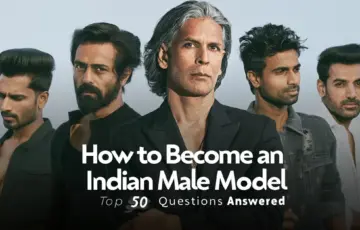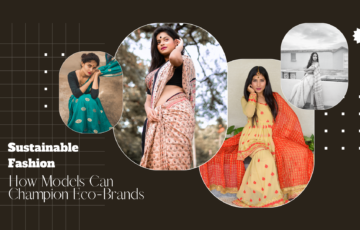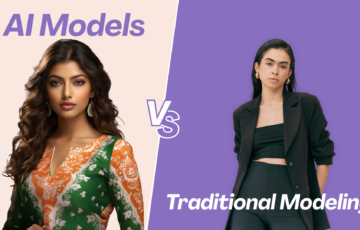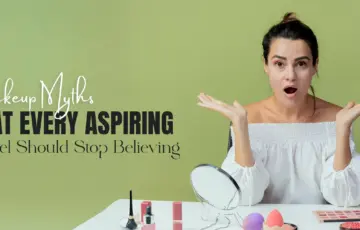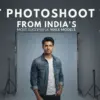The fashion industry is undergoing a spectacular transformation. For decades, a single, narrow standard of beauty dominated runways and campaigns. Today, those walls are crumbling, creating a vibrant, more authentic representation of beauty in all its forms. At the forefront of this revolution is the rise of plus-size modeling, a powerful movement that champions diversity, inclusivity, and self-love. Here at Dazzlerr, a platform dedicated to celebrating every facet of style, we believe this shift is not just a trend—it’s the future.
This comprehensive guide is for every aspiring curvy model who has ever looked at a magazine and dreamed of seeing themselves on its pages. It’s a roadmap designed to help you navigate the exciting plus-size modeling world, from understanding the requirements to building a killer portfolio and landing your first gig. This is more than just a career path; it’s about breaking barriers, building unshakable confidence, and becoming part of a movement reshaping beauty’s very definition for generations to come. If you’re ready to turn your dream into a reality, let’s begin.
Understanding the World of Plus-Size Modeling
Before you can conquer the industry, you must understand the landscape. The term “plus-size model” is a broad industry category, and its specific requirements can vary. Let’s demystify what it truly means to work in this dynamic niche.
Debunking Myths: What are the Plus-Size Modeling Requirements?
One of the biggest misconceptions is that plus-size modeling has no standards. While the niche is certainly more inclusive, agencies and clients still look for specific attributes. The key difference is that the focus shifts from a singular size to proportionality, confidence, and a great look.
Generally, the industry considers plus-size models to be those of UK size 12-14 and up. However, it’s less about the number on the tag and more about your specific measurements. A well-proportioned figure, where bust, waist, and hip measurements are balanced, is highly valued. Height requirements often still apply, especially for runway work, with many agencies looking for 5’8″ or taller models. That said, the rise of commercial and e-commerce work has created opportunities for petite plus models as well. Don’t let a single number discourage you; the world of inclusive fashion has many roles to fill.
Types of Plus-Size Modeling
The demand for curvy models is exploding across various sectors. Understanding these can help you tailor your portfolio and career goals.
- Commercial Modeling: The largest market includes everything from print ads and catalogues to television commercials and online brand campaigns. It’s all about a relatable, friendly, and approachable look.
- Fit Modeling: Fit models work with designers and brands behind the scenes to ensure clothing is sized and tailored correctly for a curvy body. This requires having industry-standard sample-size measurements.
- Editorial Modeling: This is the high-fashion side of the industry, seen in magazines like Vogue and Harper’s Bazaar. It calls for more artistic, unique, and edgy looks.
- Runway Modeling: While historically rigid, major fashion weeks in London, Paris, and New York increasingly feature curvy models on the runway, a significant step in breaking barriers.
- E-commerce Modeling: With online shopping booming, brands need models of all sizes to showcase their clothing on their websites. This is a fantastic and accessible entry point for many aspiring models.
Building Your Foundation: The Essential First Steps
Embarking on a career in plus-size modeling requires preparation and dedication. These initial steps are your foundation for building a successful career and learning how to become a plus-size model in a competitive market.
Step 1: Practice, Practice, Practice Your Posing
Modeling is a performance. Your ability to move, express emotion, and understand your angles is your greatest tool. You can have a fantastic look, but you won’t land the job if you’re stiff in front of the camera.
Start by studying the work of successful plus-size models. Look at magazines, brand websites, and Instagram. How do they position their bodies? How do they use their hands? Practice in front of a full-length mirror. Record yourself to see how you move. Learn to create space between your limbs and torso to avoid looking “flat.” Elongate your neck, find your best angles, and practice conveying moods—happy, profound, powerful, and serene. These posing tips for plus-size models are invaluable and will give you a significant edge.
Step 2: Taking Your Digitals (or Polaroids)
Before you even think about a professional portfolio, you need digitals. These simple, unedited snapshots show agencies and clients what you look like in your most natural state. They are the most crucial first impression you will make.
To take your digitals for models, you’ll need good, natural light (stand facing a window), a plain background (a white or grey wall is perfect), and a simple, form-fitting outfit (like black skinny jeans or leggings and a simple tank top).
Your set of digitals should include:
- Headshots: One smiling, one not smiling.
- Full-Body Shots: One from the front, one from the back, and one from each side.
- A Three-Quarter Shot: An angle between a full-body and a headshot.
Do not wear heavy makeup, and make sure your hair is clean and natural. These photos are about showing your authentic self and your body’s proportions.
Creating a Professional Model Portfolio
Your model portfolio is your resume. It’s a curated collection of high-quality images that showcases your versatility, range, and potential as a model. A strong portfolio is what will get you noticed by the best modeling agencies.
What is a Modeling Portfolio?
A “book,” as it’s known in the industry, is a collection of your best 8-15 professional photographs. These images demonstrate that you can embody different characters, styles, and emotions. It should highlight your strengths and show clients you are a professional who can deliver the necessary shots.
Finding and Working with Photographers
You may need to invest in a few test shoots to build your initial book. Look for photographers whose style aligns with the type of modeling you want to do. A great way to start without a huge budget is to find photographers looking to do “TFP” (Trade for Print/Photos). In a TFP shoot, no one gets paid; the photographer, model, and stylist all collaborate to create outstanding images for their respective portfolios. Instagram and local photography groups on social media are excellent places to find these opportunities. Always vet photographers carefully and prioritize your safety by meeting in public first or bringing a friend to the shoot.
The Essential Shots for Your Book
A strong portfolio showcases your range. It should include:
- A Killer Headshot: This can be a beauty shot (close-up on your face) or a commercial headshot (smiling and friendly).
- A Full-Length Body Shot: This clearly shows your proportions and physique.
- Movement and Action Shots: Show that you can move dynamically.
- Commercial and Editorial Looks: Include a mix of styles to show your versatility. A bright, happy commercial shot and a more serious, high-fashion editorial shot are great.
The Comp Card: Your Business Card
The model’s physical business card is a comp card (composition card). It’s a double-sided card featuring your best photo (usually a headshot) on the front with your name, and a collage of 3-5 of your best portfolio images on the back. It also includes your key stats: height, bust, waist, hip measurements, dress size, shoe size, hair colour, and eye colour. You leave this behind at castings and with potential clients.
Getting Scouted: Finding Representation
While freelance modeling is a viable path, getting signed by a reputable agency can open doors to bigger clients and higher-paying jobs. Finding the proper representation is a crucial step.
Researching Modeling Agencies
Not all agencies are created equal. You need to find one that is legitimate and has a strong “curve” or “plus” division. Search online for the top modeling agencies in major fashion hubs like London, New York, or your nearest major city. Look at their websites and see what models they represent. Do you fit their aesthetic? A top-tier agency specializing in plus-size models is often called a curve model agency.
Make a list of agencies that feel like a good fit. Follow their submission guidelines precisely. Most agencies have an online submission form on their website where you will upload your digitals images and provide your measurements.
How to Avoid Modeling Scams
The industry can attract predators, so it’s vital to be vigilant. Reputable agencies make their money by taking a commission (usually 20%) from the jobs they book for you. They do NOT require you to pay hefty upfront fees for representation or force you to use their specific, overpriced photographer to build a portfolio.
Red flags for modeling scams include:
- Guarantees of work or fame.
- Pressure to sign a contract immediately without letting you review it.
- Requests for money up front for classes, photoshoots, or website placement.
- Unprofessional communication or lack of a physical office address.
Trust your instincts. If something feels off, it probably is.
The Freelance Route: Building Your Own Brand
In today’s digital age, you don’t necessarily need an agent to start your career. Freelance modeling offers flexibility and control, allowing you to be your boss. This path requires hustle, business acumen, and a strong online presence.
Leveraging Social Media for Models
Platforms like Instagram and TikTok are compelling tools for freelance modeling. They act as a living portfolio and a direct line to brands and photographers. To build your brand on social media:
- Curate Your Feed: Treat your grid like a professional portfolio. Post high-quality images, including both professional shots and well-lit digitals.
- Use Relevant Hashtags: To increase your visibility, use a mix of broad hashtags (#plusmodel, #curvymodel) and niche hashtags (#plussizefashion, #bodypositivity).
- Engage with the Community: Follow and interact with brands, photographers, makeup artists, and other models you admire. Networking is key.
- Show Your Personality: Let your followers see who you are behind the photos. This builds a connection and a loyal audience.
Networking and Building Connections
As a freelancer, your network is your lifeline. Attend local fashion events, connect with creatives online, and always be professional and courteous. Every connection you make, from a photographer to a local boutique owner, could lead to your next paid job. Building a reputation as a reliable and talented plus-size model will lead to more opportunities through word-of-mouth.
Beyond the Look: Cultivating Confidence and Professionalism
Embracing Body Positivity and Confidence
Confidence is magnetic, and it shines through in photos. The modeling journey is also a self-love journey. Embrace what makes you unique. Understand that your body is your instrument and learn to love and care for it. The body positivity movement is at the heart of inclusive fashion, and by stepping in front of the camera, you become an ambassador for that message. Your confidence can inspire others.
Handling Rejection with Grace
Rejection is a regular and frequent part of the modeling industry. You will not get every job you go for. It is crucial not to take it personally. A client might be looking for a different hair colour, height, or a specific “vibe” that has nothing to do with your talent or beauty. Develop a thick skin, learn from each experience, and move on to the next opportunity with your head held high. Resilience is a superpower in this business.
Conclusion: Your Future in Fashion Awaits
The path to becoming a successful plus-size model is one of passion, persistence, and professionalism. From understanding the industry’s requirements and practicing your poses to building a stunning portfolio and cultivating unshakeable confidence, every step is a building block for your career.
The fashion industry is more ready than ever for a diverse range of faces and bodies to represent it. This is a monumental shift, and you have the opportunity to be a part of it. The journey requires hard work, but the reward—a career that celebrates who you are and inspires others—is immeasurable. As a platform that champions the future of inclusive fashion, Dazzlerr is excited to see a new generation of talent rise. Now, break those barriers out there, and let your unique light shine.





